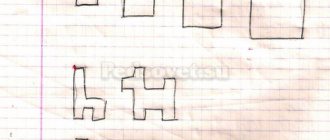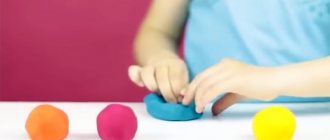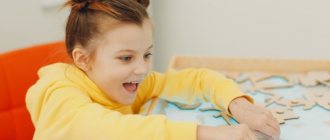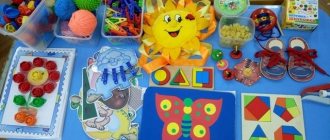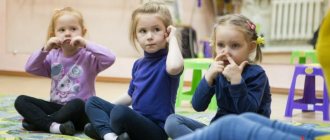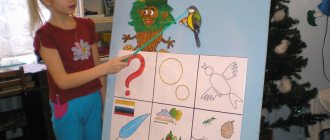Almost all parents know about the need to develop fine motor skills in children.
It stimulates the speech center, thinking and attention, helps the child prepare for school, and simplifies the development of writing. In order to help your son or daughter, it is not at all necessary to purchase expensive teaching aids or spend a lot of time on special training. A little attention, a good mood - and little fingers will gradually become skillful and dexterous, speech development will improve and new skills will appear.
What are fine motor skills
At first glance, fine motor skills are just dexterity of the fingers and hands, allowing you to perform actions of varying degrees of complexity. In fact, this is a physiological process that coordinates the work of the body’s muscular, nervous and visual systems, and involves our thinking, imagination, spatial perception and memory.
It is not difficult for an adult to perform seemingly simple actions: writing, fastening a button, or pouring water from a jug into a glass. For a child, these actions are aerobatics that will have to be mastered over a long period of time.
However, fine motor skills are not only about self-service and everyday life skills. Science has proven that the hands are a projection of 2/3 parts of the cerebral cortex, which are located near the speech center of the human brain. This made it possible to put forward the hypothesis that fine motor development is directly related to the development of speech, and the hands are the same speech organs as the articulatory apparatus.
This knowledge has elevated fine motor skills into a real cult, on which manufacturers of goods for children and educational courses for children are capitalizing. In fact, the development of motor skills does not require deep academic knowledge or expensive props - classes can be carried out at home using household items.
Hatching tasks
This type of activity is suitable for more diligent children, but at the same time, shading is very useful for the development of hand muscles. You need to start classes with simpler exercises: for example, prepare cards with images of animals, on which a few strokes will already be drawn as an example. The child is asked to complete the shading at the same angle and with the same distance between strokes. More advanced level - arbitrary shading. For example, a child may shade two identical images differently depending on the story they come up with.
At what age should I start classes? Stages of development of fine motor skills in children
Early childhood development experts recommend starting classes at 8 months. In fact, mothers begin to do the first exercises to develop fine motor skills for their babies from the first days of life. In order to reduce muscle tone in newborns, neurologists advise regularly performing gymnastics, which includes simple exercises for the arms and legs, stroking and placing the mother’s finger in the baby’s palms. These actions stimulate the cerebral cortex even when the child cannot do them on his own.
As the baby grows up, his interest in toys awakens. First - to big and bright ones. By 3 months of life, he unconsciously reaches out to them, tries to grab them with both hands while still at the level of reflexes - this is how he learns about the world around him.
At 5-6 months , awareness develops, the child reaches for a specific toy, can grab it with one hand, pulls it into his mouth - this is how coordination develops and muscles become stronger.
And finally, by 8-12 months , when the child is already sitting, crawling, learning to stand up and walk, and is actively interested in every object around him, you can begin full-fledged classes for the development of fine motor skills.
By this time, the baby has learned not only to take toys, but also to return them to an adult, he can transfer them from one hand to another, take them with two fingers, and deliberately throw them on the floor. At this age, they practice finger games, sorting small objects, playing with sand, etc.
At 1-2 years old , a child can already be captivated by “educational” toys:
- large cubes;
- pyramid (the baby easily collects up to 5 rings);
- construction set with large parts;
- push-button toys.
At this time, the first interest in drawing is formed - so far only in the form of chaotic lines. Progress is achieved in self-care: the child learns to eat independently with a spoon, brush his teeth, comb his hair, etc.
By 2-3 years, these skills are consolidated and improved. The baby is captivated by books with bright pictures, easily leafing through page after page, holds a pen or pencil more confidently (with two fingers, not the whole hand), and enjoys crumpling plasticine, rolling it out, and pinching off small pieces from it.
The time has come to introduce the baby to scissors and make the first applications together with an adult. This is also a good time to teach your child how to hold a pen correctly. It is better to do this in advance, when the baby is just starting to pick up a writing object in his hand - otherwise it will be more difficult to retrain. All these skills prepare him to master writing in the future.
At 3-4 years old , a child confidently connects dash-dot lines and draws dots. He is interested in modeling - he is already making balls, snakes and caterpillars. Can independently put on pants, socks, shoes, a hat, fasten and unzip a zipper.
By the age of 5 , writing skills are actively developing, and the writing of printed letters and numbers is being mastered. The child actively learns letters, can write his name, cuts out paper figures along the contour, and colors without going beyond the boundaries. Dresses and puts himself in order without the help of an adult. During this same period, one of the hands finally becomes dominant.
At 6-7 years old, a preschooler already confidently wields a pen and pencil, laces up shoes, and assembles models from construction sets. The motor skills of seven-year-olds are ready to master calligraphic writing skills, and by the age of 8, the child will have developed legible handwriting.
Architectural modeling
Architectural modeling is an exercise that simultaneously uses motor, visual and associative memory. It develops the technique of mastering drawing tools, graphic literacy, instills skills in orientation in space and on a sheet of paper, and helps children in solving design problems.
For home use, you can purchase kits with ready-made models and a list of various architectural details that children will turn into a building model.
There are different types of constructors:
- sets with blocks-cubes;
- paper constructors;
- designer constructors;
- architectural designers (for those who are especially enthusiastic).
Another way to get acquainted with architectural modeling is through drawing sets, which usually include special sheets, grids, rapidographs and other necessary attributes for the future architect/designer. They are most often bought in hobby hypermarkets and art markets. Reading books, watching movies and topical lectures will also help your child become more familiar with the topic.
How to organize classes to develop fine motor skills at home?
You should approach the organization of activities with your child with imagination, starting from four basic principles:
- appropriate for the child’s age;
- child's preferences;
- game format of classes;
- constant dynamics.
From the previous paragraph, you learned that each age has its own level of development of fine motor skills, so you should not require a three-year-old to write capital letters - first you need to work on simpler elements with him.
Classes with a preschooler should not be long and tiring; if you notice that the child is bored, change the type of activity, dilute it with physical activity. Use in your classes the attributes of his favorite fairy tale and cartoon characters and favorite toys.
When planning activities with your child, remember that any progress is achieved only in dynamics. There will be no effect if you repeat the same exercises day after day - they need to be complicated, modified, combined. This will give a good impetus to development.
Helping around the house develops motor skills just as well as toys and special exercises. Wiping dust, washing and wiping dishes, sweeping seem like a chore only to an adult, but for a child this is a new exciting world in which he, like an adult, does important things.
It is important to be careful when drawing, sculpting or appliqueing. After all, in any work the result is important, the child should be proud of it in order to have an incentive to develop further. Help him bring his work to perfection.
Praise your successes, rejoice in small victories together, and don’t allow yourself unnecessary criticism. Support and approval are an important condition for the harmonious development of a child’s personality.
Drawing for children
Almost all children love to draw, so they will like such exercises. Finger paints are perfect for preschool children - this type of creativity uses both hands at once, which has a great effect on brain development.
Schoolchildren can already be offered exercises with a pencil. Activities such as tracing flat shapes, drawing using reference points, completing the missing half of a picture, or drawing according to a model without taking your hands off the paper are perfect for this age.
The main thing is to avoid monotony and come up with entertaining stories for each task. For example, you can prepare special cards where the images will have no outline, and the child will have to restore this outline. Labyrinths are also excellent for developing motor skills, which the child must “go through” in one line, without going beyond the outline.
Ways to develop fine motor skills
Finger exercises and hand massage
The very first exercises for the development of fine motor skills are finger gymnastics. Simple exercises and massage of the hands and fingers stimulate the brain centers and remove muscle tone. To make classes more fun, sing songs, read poems and nursery rhymes, for example:
- massage each finger, and then bend it into the center of the palm, singing: “Finger, where is your house? What is your name? I am the thumb, and my home is here”;
- game “magpie-crow”: we describe a circle on the palm of our hand, saying: “The magpie-crow cooked porridge, fed the children,” then massage the pad of each finger: “I gave it to this one, I gave it to this one, and I gave it to this one, and I gave it to this one, but I didn’t give it to this one.” gave - he didn’t chop wood, didn’t carry water and didn’t go into the forest, so he remained hungry”;
- “Okay” game: clap your hands together with the child: “Okay, okay, where were you - at grandma’s, what did you eat - porridge, what did you drink - brew, sat down and ate - they flew and sat on their heads”;
For children over 3 years old, games can be made more complex, expanding vocabulary and consolidating useful knowledge. For example, the finger game “days of the week” - we depict with our hands actions or objects from the poem:
On Monday I did the laundry, on Tuesday I swept the floor, on Wednesday I baked a loaf of bread, all Thursday I looked for the ball, I washed the cups on Friday, and on Saturday I bought a cake, on Sunday I called all my girlfriends for my birthday.
The game “Shadow Theater” is popular among children, when, with the help of a lamp, hands and imagination, animals come to life on the wall: a wolf, a firebird, a goose, a bunny, and so on.
Massage balls, rollers and Su-Jok therapy
Children love “spiky” balls with spikes; they not only look like hedgehogs or thorns, but also do an excellent job of self-massage. You can come up with many games with them:
- collect the “hedgehogs” in a basket;
- roll the “thorn” from the hand to the shoulder, from the foot to the thigh;
- put the ball by the baby’s collar so that he can get it;
- throw the ball to each other;
- step on the hedgehog.
Such games have a deep impact on acupuncture centers, which is the basis of Su-Jok therapy. According to Eastern medicine, hand and foot massage not only promotes brain development in children, but also treats many diseases.
Games with small objects
When choosing too small objects as props for games, you should not leave the child unattended so that he does not accidentally swallow them. You need to be especially careful with magnets!
For children under 3 years old, regular sorting is perfect - you can sort beans, peas, small toys, bolts, nuts, beads, buttons, and so on. You can sort not only by shape, but also by color of the item. You can make the game more difficult by placing items in containers with a narrow neck. In parallel with sorting, master counting and the concepts of “one-many”.
For older preschool children, suggest stringing beads on a fishing line, using sequins and rhinestones to decorate drawings, crafts and even clothes.
Lacing games
Have you noticed that lacing is becoming less and less common in modern children's shoes - they have been replaced by Velcro? It's convenient, safe and saves a lot of time, however, children have lost excellent regular training in fine motor skills. Give your child daddy's sneakers, or buy inexpensive lacing trainers.
Embroidery
Girls 5-6 years old can already be interested in embroidery. Nowadays, it has become safe; now special kits with a plastic needle and cardboard blanks are produced for young needlewomen. Working with a needle not only develops finger dexterity, it reduces anxiety and stress.
Paper handling
Activity paper can be used even for toddlers. My mother and I make the first craft when we are one year old.
- Craft “Snowman” - the mother draws a snowman on cardboard, the child tears a white or blue sheet of paper into small pieces, and then sculpts these pieces onto the snowman’s body, previously smeared with glue.
- Applique is a universal activity for children, as it develops not only fine motor skills, but also imagination. As the child grows up, he masters working with scissors, cutting out shapes along the contour, and learns to apply and dose glue so that the work looks neat.
- Origami is another fun way to keep your child busy. Even a preschooler can master an airplane, a flower or an envelope.
Modeling, playing with plasticine
The range of materials for modeling has long been not limited to just plasticine: different types of dough, polymer clay, wax plasticine and even cold porcelain. All this can be used at home for activities with children.
Sand games
For traditional games with sand, it is not necessary to go to the sandbox every time; you can use small grains and any kitchen container. Game options:
- construction of castles;
- playing treasure (burying small toys in the sand and then searching for them);
- finger painting in the sand;
- secrets (make a depression in the sand, create a composition in it from beautiful wrappers, beads, foil, small toys, cover it with glass, and then tear it with your finger and admire the “secret”).
Unconventional drawing techniques
You can create masterpieces of fine art not only with pencils or paints. There are other ways:
- hands (you can draw with your fingers, make handprints and fingerprints, laying them out in the shape of animals, like a shadow theater);
- threads (dip the threads in paint and make prints on canvas);
- cotton swabs (can be used instead of a brush);
- plasticine (make a beautiful pattern from a piece of plasticine, apply paint on it and make prints);
- raised drawings (for example, put a blank sheet of paper on a coin and shade until the drawing appears);
- soap bubbles (pour a soap solution into a glass, add paint, use a straw in the glass to inflate a lot of foam and lean the paper against it, getting an unusual pattern);
- salt (sprinkle the finished drawing with paints generously with salt, let it dry and shake off the residue - salt will give the image an unusual texture, volume and color).
Slime
Lately, slimes have been gaining popularity - children like to touch the jelly-like mass, roll it from hand to hand, fill jars, dip toys in it and clean it off their hands.

